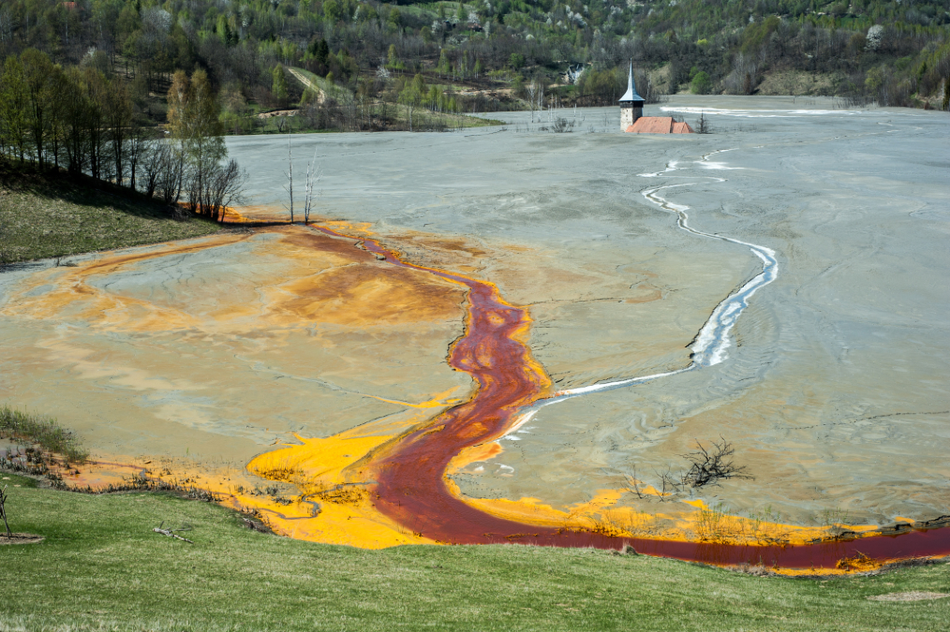Article Updated on 17 March 2021

Image Credit: kritics/Shutterstock.com
A study published in 2019 in the Journal of Environmental Management highlights the importance of elemental analysis in conservation efforts. A team from the National University of Singapore used the technique to assess trace metal contamination in a conservation area, helping them to identify the impact of human activity on the land and highlight areas where action needs to be taken to prevent environmental damage.
Heavy Metal Contamination Threatens the Environment
Environmental contamination is detrimental to the health of humans, animals and plants. Heavy metal contamination, in particular, is a leading cause of contamination.
Heavy metals such as titanium, cobalt, iron, manganese, copper, nickel, chromium, vanadium, and dozens more, occur naturally in the environment. However, at high concentrations, they can be dangerous.
Several factors cause these high concentrations, but human activity such as industrial production, mining, coal burning, smelting, petroleum combustion, nuclear power station activity, paper processing, metal processing, agricultural and domestic use of metals, and more, are considered to be a leading cause. Natural phenomena such as volcanic eruptions and weathering can also increase heavy metal levels.
Establishing robust and reliable techniques for monitoring heavy metal contamination is essential to protect the environment, as well as human health.
Given that human activity is one of the main causes of contamination, gaining an understanding of where heavy metal levels are becoming dangerously high can lead to the development of strategies to amend this activity to bring contamination levels down before they become dangerous.
Developing a Strategy to Monitor Heavy Metal Contamination
The National University of Singapore team took soil samples from 227 surface locations and 35 subsurface (auger profiles) locations. Researchers conducted elemental analysis on the samples to understand how different heavy metals were distributed across Singapore’s only remaining freshwater swamp forest, in Singapore’s Nee Soon conservation.
The data collected from an elemental analysis of the samples was then studied to learn the distribution of heavy metals across the region. The team then ran a principal component analysis, a cluster analysis, created distribution maps, and ran a correlation analysis of the element concentrations that were attained using mixed acid digestion and measurement on an ICP-MS.
Data Highlights Contaminated Areas and Links with Human Activity
Barium, chromium, copper, iron, manganese, lead, strontium, titanium, vanadium and zinc were all found to be distributed between the upper and lower catchment. These results suggested the widespread contamination of heavy metals in the lower catchment.
The team concluded that the dispersal of these heavy metals was due to natural causes, likely geological factors. However, the team’s results also found a relationship between copper, lead and antimony levels, and anthropogenic activities on land in the lower catchment used for military training. This was particularly strong for land used as firing ranges.
Levels of barium, strontium and zinc were also found to be enhanced in the lower catchment. Researchers suggested this was also possibly linked to anthropogenic activities such as military activity and the use of roads.
The data did not flag up unusually high levels of contamination. However, the conclusions of the elemental analysis showed management attention should be given to the contamination of copper, lead and antimony because of the importance of the forest to the country.
Using Elemental Analysis Could Help Prevent Future Contamination
This research demonstrates how elemental analysis is a valuable technique to environmentalists and biologists working on conservation efforts. Human activity is known to be the main cause of heavy metal contamination, which can destroy ecosystems and harm human health. Tracking levels of heavy metals, and monitoring their levels over time can inform communities where interventions are required to keep humans and the environment safe.
References and Further Reading
Drzeżdżon, J., Jacewicz, D. and Chmurzyński, L. (2018). The impact of environmental contamination on the generation of reactive oxygen and nitrogen species – Consequences for plants and humans. Environment International, 119, pp.133-151. https://www.sciencedirect.com/science/article/pii/S0160412018307001
Masindi, V. and Muedi, K. (2018). Environmental Contamination by Heavy Metals. Heavy Metals. https://www.intechopen.com/books/heavy-metals/environmental-contamination-by-heavy-metals
Nguyen, C., Wasson, R., Estrada, E., Cantarero, S., Teo, C. and Ziegler, A. (2019). Soil elemental analysis in a high conservation tropical forest in Singapore. Journal of Environmental Management, 232, pp.999-1011. https://www.sciencedirect.com/science/article/pii/S0301479718313719
Tchounwou, P., Yedjou, C., Patlolla, A. and Sutton, D. (2012). Heavy Metal Toxicity and the Environment. Experientia Supplementum, pp.133-164. https://www.ncbi.nlm.nih.gov/pmc/articles/PMC4144270/
Disclaimer: The views expressed here are those of the author expressed in their private capacity and do not necessarily represent the views of AZoM.com Limited T/A AZoNetwork the owner and operator of this website. This disclaimer forms part of the Terms and conditions of use of this website.